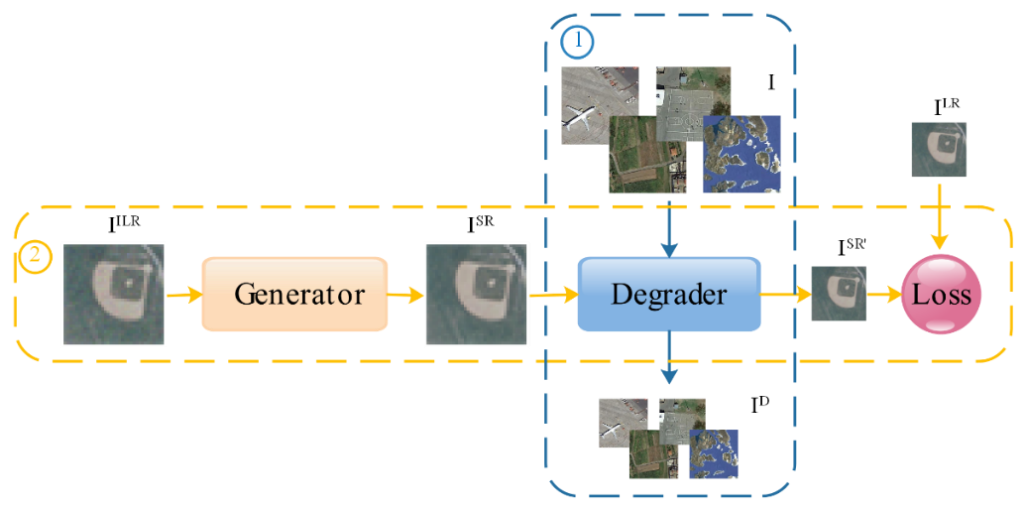Author: ZHANG Ning |
High resolution (HR) remote sensing images play an important role in environment monitoring, military reconnaissance, and urban planning. However, the direct acquisition of numerous HR images requires high-performance imaging equipment, while improving image resolution with super-resolution (SR) algorithm saves a lot in time and money. Therefore, it is of great significance to study on image SR algorithms.
Led by Prof. WANG Yongcheng, a research group from Changchun Institute of Optics, Fine Mechanics and Physics (CIOMP) of the Chinese Academy of Sciences (CAS) proposed an unsupervised remote sensing image SR method based on deep learning. This study was published in IEEE Xplore. This method does not require HR images as training labels and can handle the complex degradation of remote sensing images.
To be specific, this method firstly trained a convolutional neural network (CNN), named Degrader, to learn the degradation information involving noises, blurring and downsampling, and introduced prior information from external image datasets. Then the Generator was constructed to realize play-and-plug image SR by learning prior information from a single image. The pre-trained Degrader was used to degrade super-resolved image and calculate the loss with low-resolution (LR) image, thereby achieving unsupervised learning.
This method combines degraded information, prior information of external datasets, and the internal prior information of a single image jointly to super-resolve remote sensing images. The proposed method obtained the best numerical results compared to all the other unsupervised methods. And comparable results were obtained in contrast to the supervised SR methods on the test dataset synthesized by various degradation. And convincing visual results were obtianed on real images of Jilin-1 satellite.
This unsupervised remote sensing image SR method is more applicable in practice, and provides research foundation for subsequent downstream tasks such as image classification, object detection, etc.

Figure 1. Overview of the proposed unsupervised remote sensing image SR method. (Image by ZHANG)
WANG Yongcheng
Changchun Institute of Optics, Fine Mechanics and Physics
E-mail: wangyc@ciomp.ac.cn
